
|
|
|
|
|
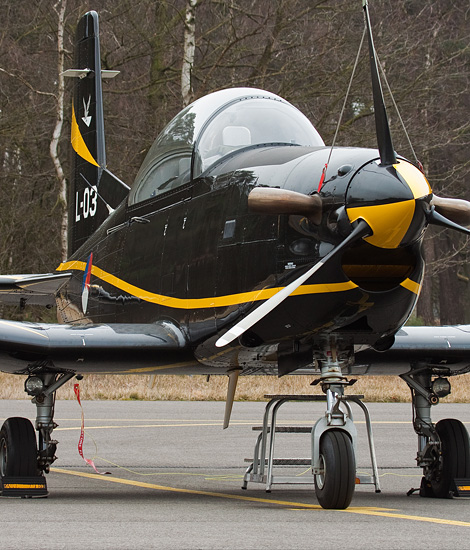
|
The Military Flying School; Woensdrecht March 11, 2010
The PC-7's of no 131 EMVO Squadron; Text and Photograph's by Alex van Noye
On Thursday, March 11, I was a guest at Woensdrecht airbase. This base is next to the PC-7 fleet also
the home base of the training department of the Royal Netherlands Air Force. Furthermore, also the
aircraft service center of the Fokker Company can be found on this basis.
The Royal Netherlands Air Force Military School (KMSL) is the training facility for future soldiers,
corporals and petty officers of the Royal Netherlands Air Force. The school is located on the terrain
of Woensdrecht airbase in Hoogerheide. The KMSL was founded in the 80s because of a merge of other
defense programs. Because of the budged cuts generated by the abolition of conscription a smaller and
more flexible force was created. The result was that an overlap of several courses was integrated
into a new one. The KMSL is the result of a merger of three former Air Force training facilities.
The first facility which became a part of the KMSL was the Air Force Instructions and Military
Training School (limos) which was located in Nijmegen. This training was used to train the conscripts
and corporals for the Air Force. Secondly, there was the Royal Netherlands Air Force School for Petty
Officers (KKSL) which was located in Schaarsbergen. All the future NCOs of the Air Force were trained
at this location. Finally there was the Air Force Electronic & Technical School (LETS) which was also
located in Schaarsbergen. The entire initial theoretical and a number of advanced practical trainings
for the Air Force took place at this location.
Nowadays the Department of Education of the Royal Netherlands Air Force contains four squadrons that
provide training, these units are: no 130, no 131, no 132 and no 133 squadron. The no 130 Military
Training Squadron provides the Initial Military Training for commissioned officers, corporals and
soldiers, security, defense of land and dog security. No 130 Squadron provides at the same time Force
Protection related training courses. The no 131 squadron is responsible for the Basic Military
Training of Pilot using the Pilatus PC-7. The rest of the training of the trainee pilots will take
place in the United States. The no 132 squadron provides organizational and didactic training for
instructors and provides leadership training. This unit is responsible for the training of NCOs.
Finally, no 133 Squadron provides the entire
|
|
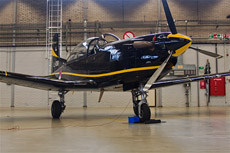
|
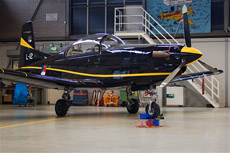
|
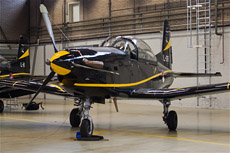
|
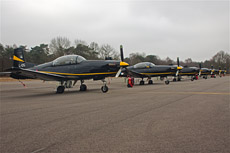
|
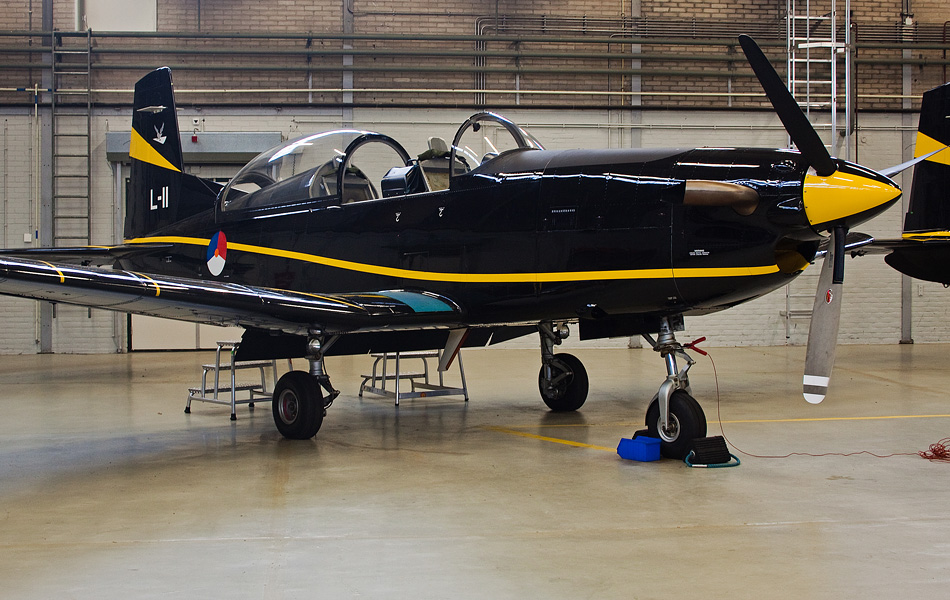
|
training for electronic specialists and technicians
for the F-16's, helicopters, mechanical ground systems, communications and fire fighters. The KMSL
has one of the most advanced military training areas for fire brigades in Europe.
The Dutch Air Force started to use the PC-7 for the training of its pilots in 1989. A total of
thirteen aircraft of this type entered service and they are all stationed at Woensdrecht airbase.
These aircraft were painted yellow with a white and red stripe over the fuselage in the past.
Research by TNO showed that these aircraft are much better visible in Dutch airspace with a black
color scheme. The air force decided to paint the PC-7's black after this investigation. The trainee
pilots will practice all the basics of flying with the PC-7 such as: take-off and landing, basic
maneuvers, dealing with air traffic control and instrument flight. Landing of the aircraft is the
most difficult part of the training course according to the students. A lot of approaches are made
with the PC-7 at Gilze-Rijen, Eindhoven and Volkel to train the students for this part of the course.
The students will move to the United States to continue their training after they completed this
course.
Our visit began with a welcome at the base information centre of Woensdrecht. From here we went by
bus onto the field. First we had a visit at no 131 EMVO squadron. This unit is located on the north
side of the base where they have two hangars and a platform. When we arrived there were no less than
six PC-7's outside on the platform and there were a lot of pilots in the building. Unfortunately one
of the pilots told us the morning mission was canceled because of a low cloud base. This was too
dangerous for the pilots to go out with their aircraft because ice is formed on the wings of the PC-7.
Inside the hangar we found three PC-7's and we were allowed to take some photographs of these
machines. A number of pilots who walked along the aircraft in the hangar with us answered all our
questions about the PC-7. We also were allowed to take photographs of the PC's on the flight line in
front of the building. Unfortunately they were all closed and packed under some covers on the
platform because of the canceled flight. It was the intention that we were on the platform during the
start-up and taxiing of these aircraft. This was very unfortunate but I tried to make the best of it,
the weather was just not good enough. There were three PC-7's in the second hangar, but we were not
allowed to take pictures of these aircraft. There was one Norwegian F-16 on the test platform next to
the EMVO platform. We went to this platform after we photographed the flight line with the PC-7's.
We moved to the platform of the Fokker Services Company after this short visit at the test platform.
We were not allowed to enter this area because the Air Force doesn't have any authority over here.
The newest DC-10 of no 334 squadron was on the terrain of Fokker Services and we were allowed to take
a few pictures of it through the fence. For the rest there was not much to see and soon we would be
brought to the main runway because the newest Air Force Hercules came in for a few approaches. Also
the PC-7's would pass us at this point during their take-off and we were ready to take photographs of
them. Unfortunately we were told that the second flight of the PC-7 was canceled as well for the same
reasons as the first one. The weather had still not improved and the little black aircraft stayed on
the ground again. The new Hercules had reported itself in the meanwhile and it would come in within
fifteen minutes. At least we had some action next to the runway because until now we had an
unfortunate day. The Hercules finally appeared on the horizon after fifteen minutes and we all had
some very spectacular landing pictures of this machine. The Hercules made up to five different
approaches before it left the base inbound Eindhoven. Our visit to Woensdrecht was over right after
the departure of the Hercules. Unfortunately we had bad luck today, but nobody could do anything
about that.
|
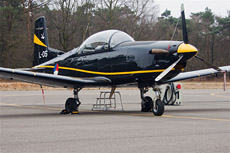
|
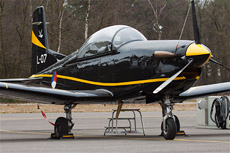
|
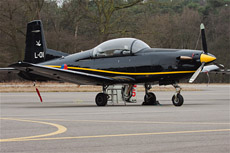
|
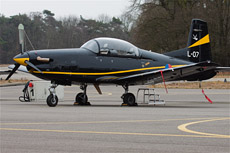
|
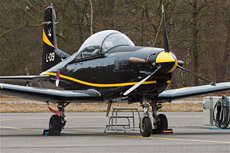
|
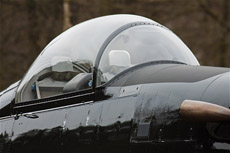
|
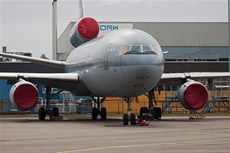
|
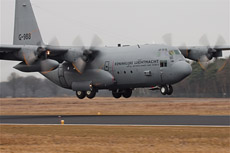
|
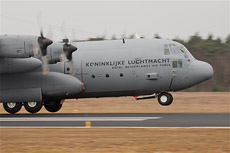
|
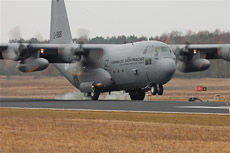
|
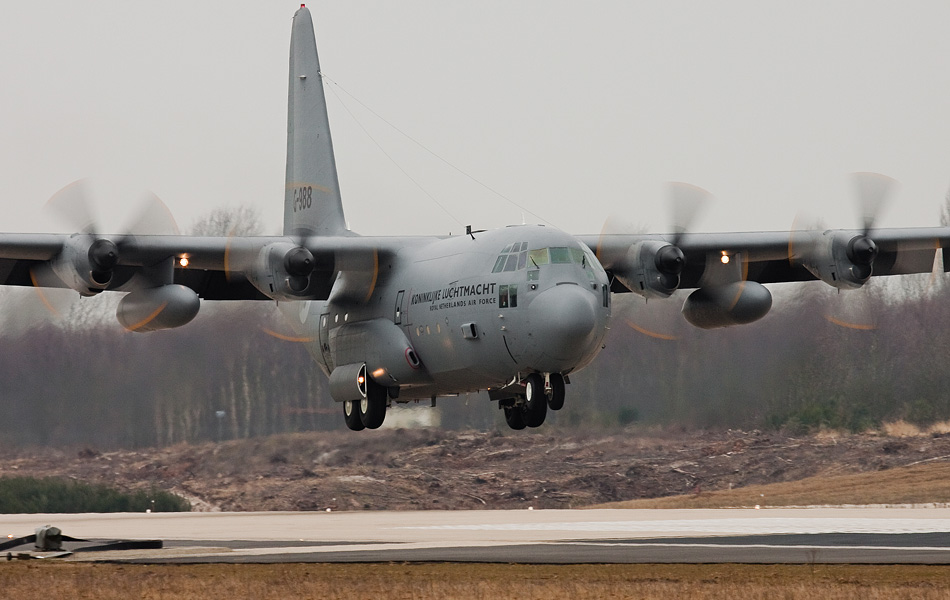
|
|
|

|







